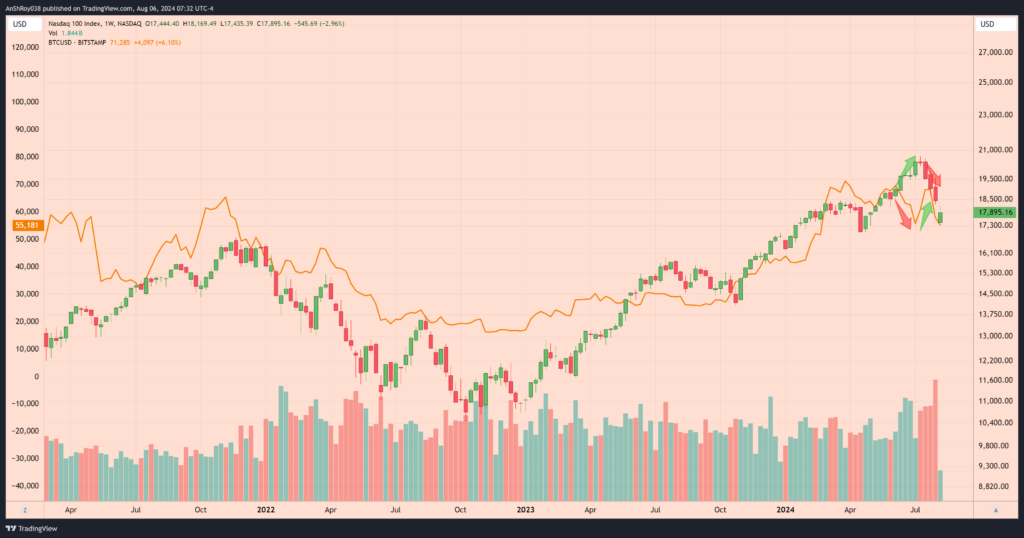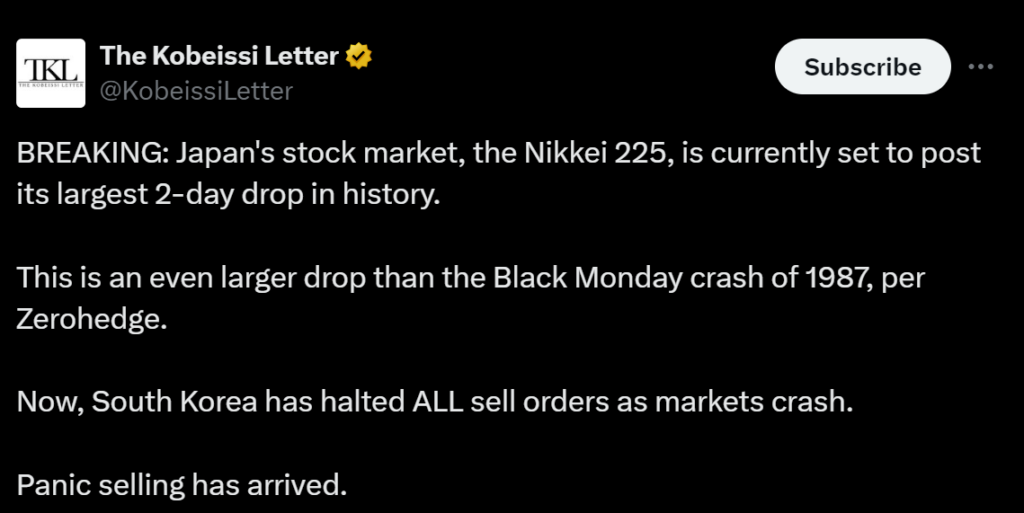What Does Warren Buffett’s Apple Stock Dump Mean for Bitcoin Market
0
0

NOIDA (CoinChapter.com)— The recent market crash has sent shockwaves through the financial world, with Bitcoin and major tech stocks experiencing significant declines. Bitcoin plunged to as low as $52,400, while Ethereum fell to $2,100 amidst widespread sell-offs across various asset classes.
Warren Buffett’s recent sale of nearly 50% of Berkshire Hathaway’s stake in Apple exacerbated the bearish sentiment in the market. Furthermore, the veteran investor’s move raised eyebrows and sparked concerns about the valuation and stability of tech stocks, which have been the market’s driving force, especially in 2024.
Tech Stocks Peaking and Bitcoin Correlation
Warren Buffett’s decision to significantly reduce Berkshire Hathaway’s Apple holdings may signal his concerns about the tech sector’s valuations. Apple, as a bellwether for the tech industry, plays a crucial role in market sentiment.
Investors could interpret Buffett’s move as a cautionary stance against potential overvaluation, prompting them to reassess their positions in tech stocks.

Historically, there has been a notable correlation between tech stock performance and Bitcoin’s performance. The correlation intensifies during periods of heightened market volatility, testing investors’ risk tolerance.
As Buffett’s sell-off potentially triggers a broader revaluation in tech stocks, a cascading effect could ensue, leading to a sell-off across the tech sector. Such a scenario would likely extend to cryptocurrencies, including Bitcoin, as investors reduce exposure to risk assets.

However, the correlation between stocks and Bitcoin has been iffy since June, with BTC price plunging as the Nasdaq 100 surged. The correlation between Bitcoin and tech stocks means that a downturn in the latter could drag Bitcoin prices down.
With tech stocks potentially peaking, investors might anticipate a correction, leading to decreased liquidity in the market. The reduced liquidity can amplify price declines, particularly in volatile assets like Bitcoin.
As a result, the market could see a synchronized decline, where falling tech stock prices contribute to a bearish trend in Bitcoin and other cryptocurrencies. Moreover, a depressed traditional financial market could reduce the impact of the Federal Reserve potentially cutting rates in Sept. 2024.
Recession Warnings Loom
The recent market volatility, marked by the largest two-day drop in Japan’s Nikkei 225, raises serious concerns.

An X post by The Kobeissi Letter highlighted that the decline in Nikkei surpassed the Black Monday crash of 1987, indicating significant market stress. Simultaneously, South Korea has halted all sell orders, reflecting widespread panic.
Furthermore, these events suggest growing fears of a recession. The tech stock sell-off, partly driven by Warren Buffett’s sale of Apple shares, points to concerns about overvaluation.
As tech stocks have been key drivers of market growth, their decline may signal broader economic challenges, potentially affecting cryptocurrencies and other assets.
The global impact, with major markets experiencing stress, highlights the risk of a synchronized downturn. The halt in South Korea’s market underscores the severity of the situation as authorities seek to stabilize financial conditions.
The post What Does Warren Buffett’s Apple Stock Dump Mean for Bitcoin Market appeared first on CoinChapter.
0
0
 Manage all your crypto, NFT and DeFi from one place
Manage all your crypto, NFT and DeFi from one placeSecurely connect the portfolio you’re using to start.





